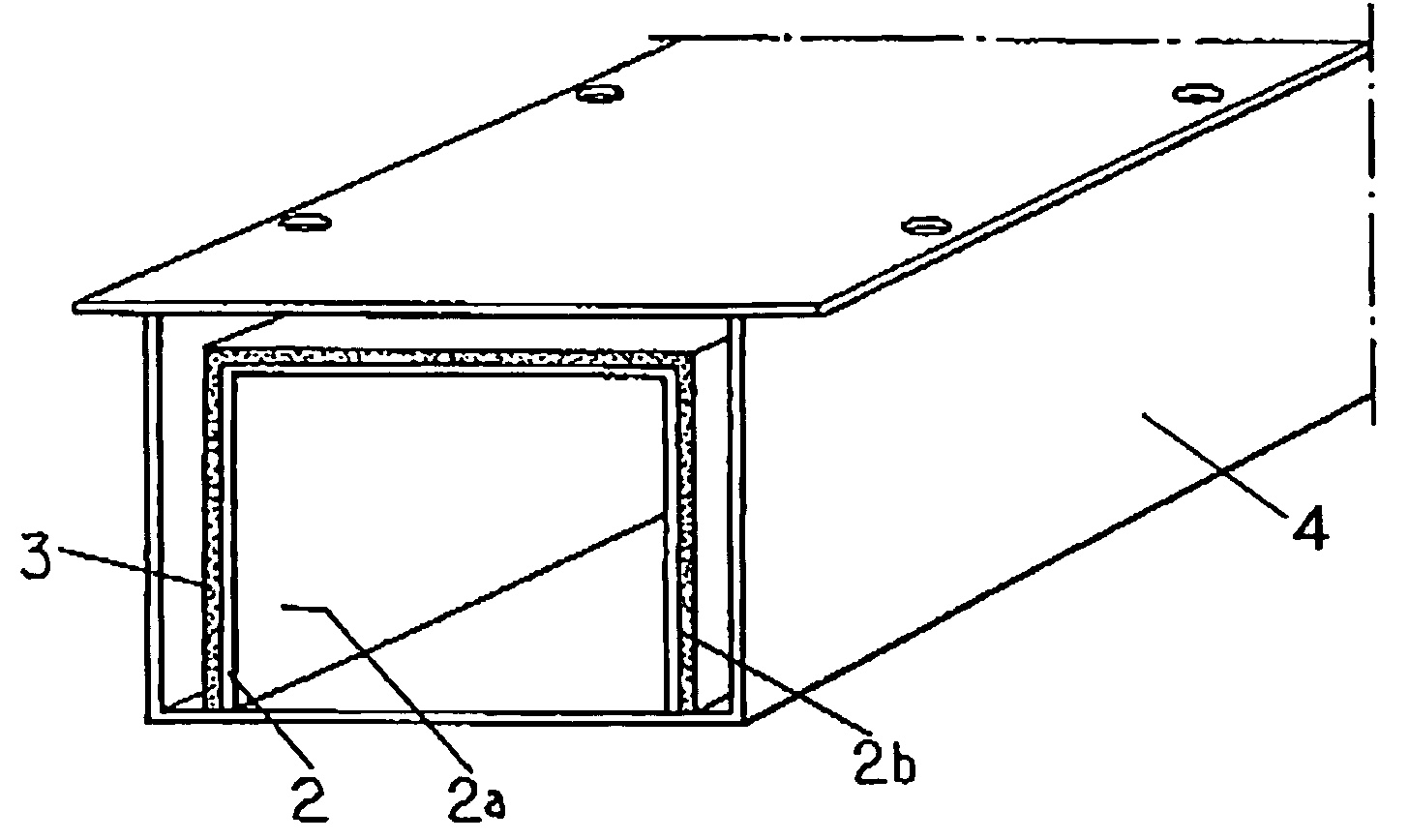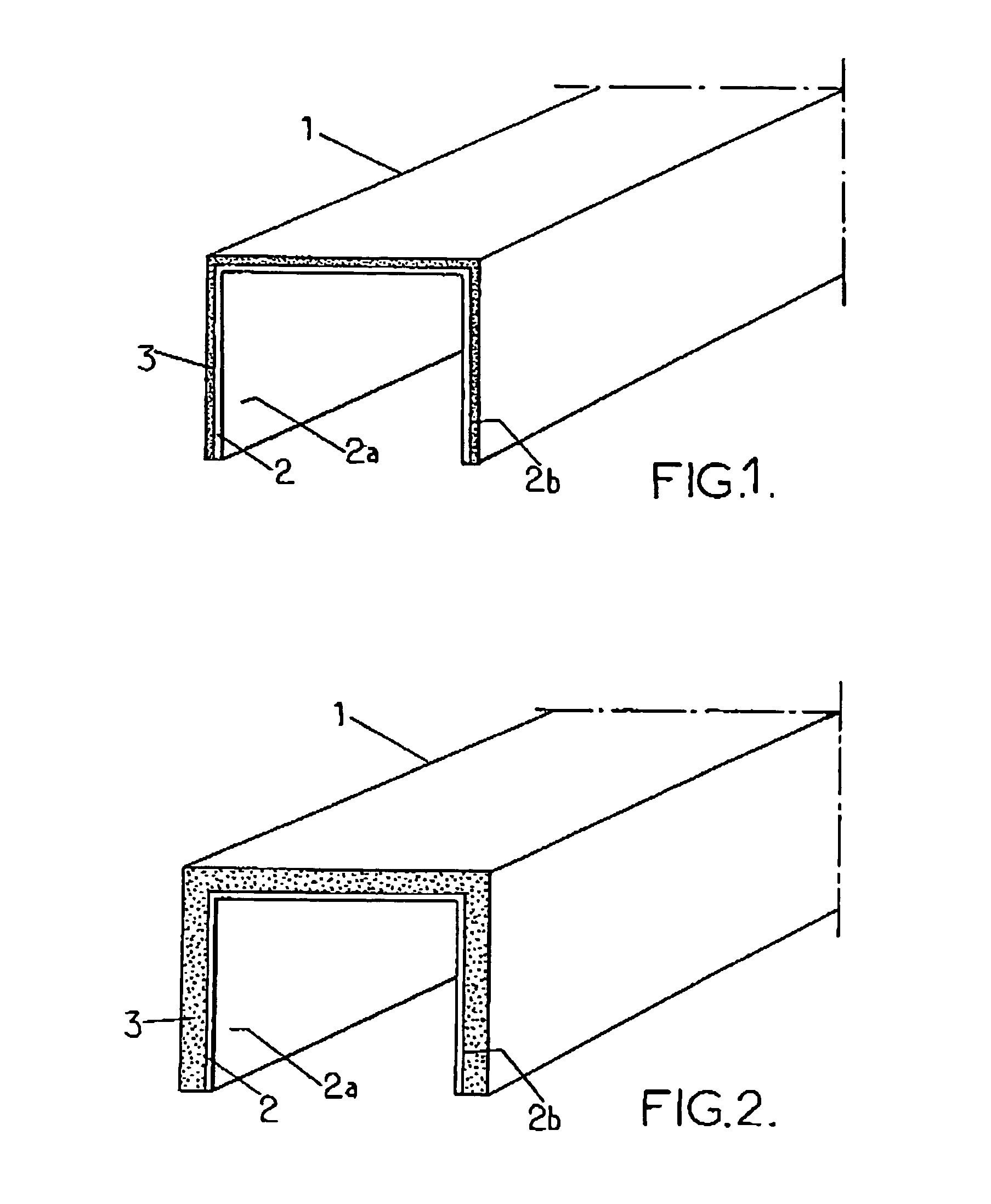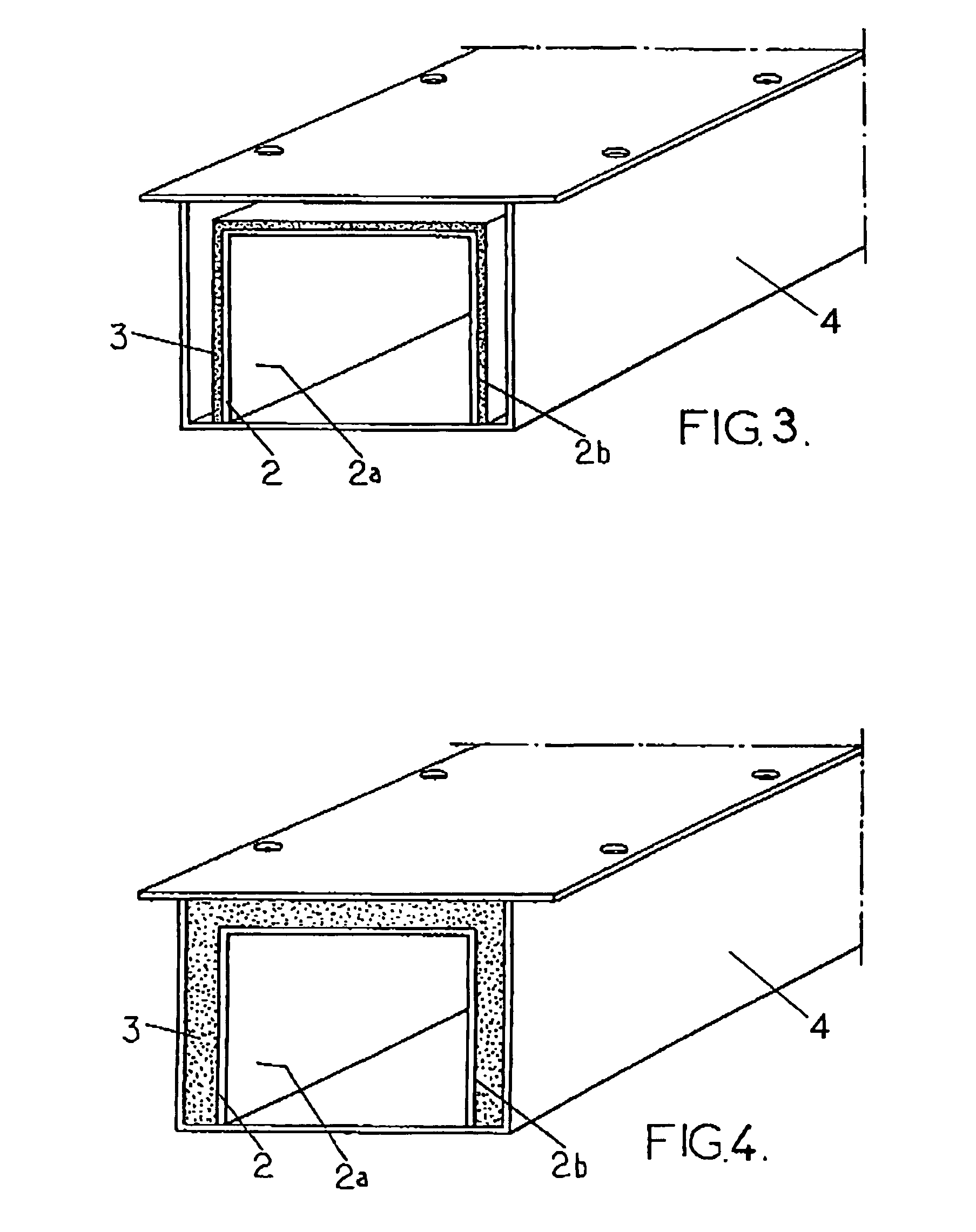Reduction of vibration transfer
a technology of vibration generator and transfer method, which is applied in the direction of roofs, flooring, building components, etc., can solve the problems of unsatisfactory noise reduction extent of these methods, brittleness, and tendency to peel off from metal sheets, and achieve the effect of effective reduction of structure borne nois
- Summary
- Abstract
- Description
- Claims
- Application Information
AI Technical Summary
Benefits of technology
Problems solved by technology
Method used
Image
Examples
Embodiment Construction
[0023]As previously mentioned, the thermally expandable material to be used in combination with a carrier is selected among those which, after expansion and at a temperature between −10 and +40° C., have a Young's storage modulus E′ between 0.1 MPa and 1000 MPa, preferably a loss modulus E″ between 0.5 and 1, a loss factor greater than 0.3 (preferably, greater than 1) and preferably also a shear storage modulus G′ between 0.1 MPa and 500 MPa in the frequency range 0 to 500 Hz.
[0024]Young's storage modulus (E′) is defined as the ratio of tensile stress to tensile strain below the proportional limit of a material. Shear storage modulus G′ is defined as the ratio of shearing stress to shearing strain within the proportional limit and is considered a measure of the equivalent energy stored elastically in a material. The loss factor (also sometimes referred to as the structural intrinsic damping or tan delta) is the ratio of the Young's loss modulus E″ over Young's storage modulus E′ for...
PUM
| Property | Measurement | Unit |
|---|---|---|
| frequency | aaaaa | aaaaa |
| Young's storage modulus | aaaaa | aaaaa |
| temperature | aaaaa | aaaaa |
Abstract
Description
Claims
Application Information
 Login to View More
Login to View More - R&D
- Intellectual Property
- Life Sciences
- Materials
- Tech Scout
- Unparalleled Data Quality
- Higher Quality Content
- 60% Fewer Hallucinations
Browse by: Latest US Patents, China's latest patents, Technical Efficacy Thesaurus, Application Domain, Technology Topic, Popular Technical Reports.
© 2025 PatSnap. All rights reserved.Legal|Privacy policy|Modern Slavery Act Transparency Statement|Sitemap|About US| Contact US: help@patsnap.com



